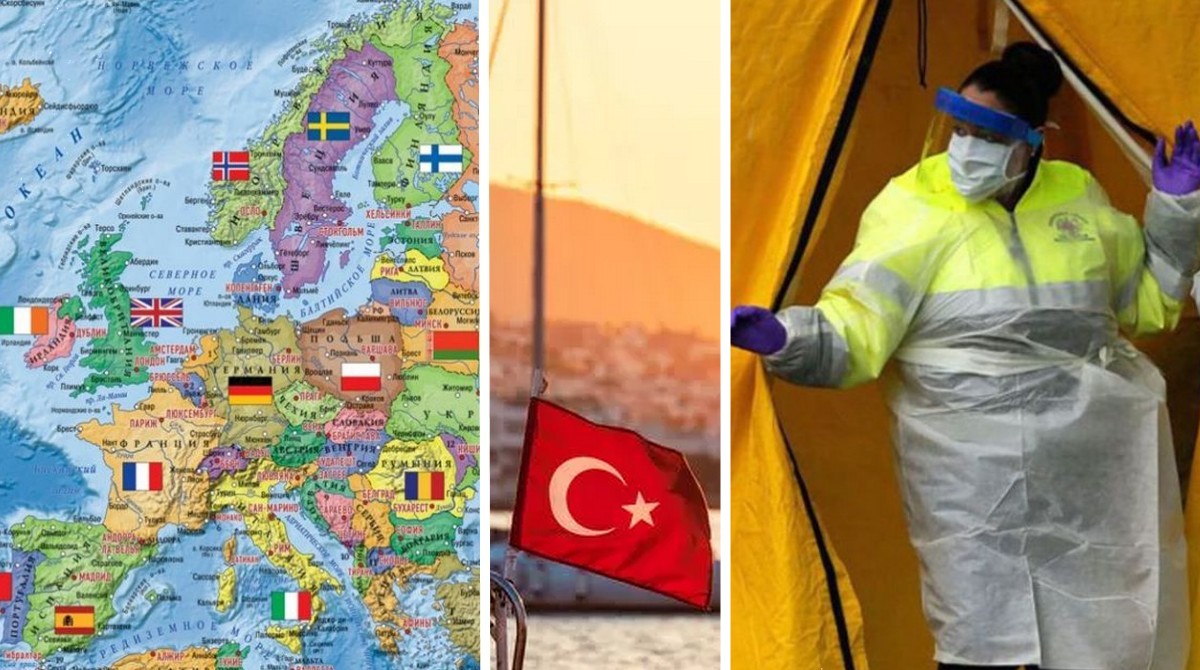Travelers heading to Europe and Turkey this summer have been advised by experts to plan their holiday based on the new warning. In most countries of Europe, including popular tourist routes, as well as Turkey, two dangerous tropical infections – mosquito fever – are spreading rapidly.
So, according to data published by The Sun concerning the reports of epidemic specialists, mosquitoes that carry deadly diseases have reached new areas of the continent. Experts associate this negative trend with climate change, which causes frequent heat waves and floods. Scientists have expressed concern about the possibility of the virus spreading to other European countries, which could lead to an increase in the number of cases and deaths from tropical diseases such as dengue and West Nile fever. In this regard, they urged travelers and residents of the affected regions to take precautionary measures: use repellents, install protective nets in places of sleep, sleep in air-conditioned rooms and wear clothes with long sleeves, do not create stagnant water or avoid being near such bodies of water, because it is in stagnant water that mosquitoes breed.
Measures are taken and appeals to governments
Experts also urged governments to take necessary measures to eliminate sources of stagnant water, as well as use environmentally friendly larvicides. In their appeal, they cited a report by the European Center for Disease Prevention and Control (ECDC), which found that invasive mosquito species that carry several deadly diseases – yellow fever, Zika, and West Nile virus – are now common in 14 EU countries. which is twice as much as 8-10 years ago. In addition, these insects have already settled outside of Europe, including Georgia and Turkey.
Representatives of Aedes albopictus, a known vector of dengue and chikungunya, have been detected in the following countries:
- Austria
- Albania
- Bulgaria
- Bosnia and Herzegovina
- Hungary
- Germany
- Greece
- Georgia
- Spain
- Italy
- Cyprus
- Macedonia
- Malta
- Moldova
- Monaco
- Portugal
- Romania
- Serbia and Kosovo
- Slovenia
- Turkey
- Ukraine
- France
- Croatia
- Montenegro
- Switzerland
Andrea Ammon, head of the ECDC, emphasized: “In recent years, we have seen the geographical spread of invasive mosquito species in previously unaffected areas of the European Union and the European Economic Area. If this continues, we can expect to see an increase in cases and possibly deaths from diseases such as dengue, chikungunya, and West Nile. Therefore, it is necessary to focus on the fight against mosquito populations, strengthening epidemiological surveillance measures and ensuring compliance with individual protection measures.”
The ECDC also noted in its report that 1,133 cases of West Nile virus infection were reported in 2022, including 92 fatal cases, with the majority of cases reported in Europe. In continental Europe alone, about 71 cases of local dengue infection were reported, which is a significant increase compared to the period from 2010 to 2021.
According to the ECDC, the full list of tropical diseases currently present in Europe and Turkey is as follows:
-
- Dengue fever is a tropical infection that can cause severe muscle and joint pain in infected people. Approximately one in ten infected people develop a severe form of dengue, which can lead to shock, internal bleeding, and even death.
- Chikungunya is a viral infection common in Africa, Asia, and North and South America. It causes fever, severe joint pain, muscle pain, headache, nausea, fatigue, and rash. In isolated cases, it can lead to serious complications, especially in the elderly.
- Yellow fever is a tropical infection that affects the liver and kidneys. The virus causes severe pain and nausea, and in severe cases can lead to jaundice and heart failure.
- West Nile virus. Most infected people show no symptoms, but some develop flu-like symptoms, such as headache and fever. In severe cases, patients can develop serious neurological problems that can be fatal.
- Zika virus. The virus is found mainly in North and South America and Asia. Symptoms are usually mild, but some people may experience a rash, itching, joint pain, fever, headache, and back pain. There is a particular danger for pregnant women since the virus can be transmitted from mother to child and cause serious complications, such as Guillain-Barré syndrome and the congenital defect of microcephaly in babies.

